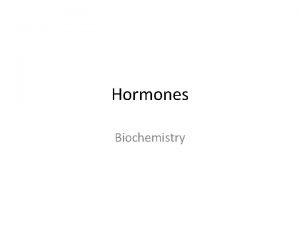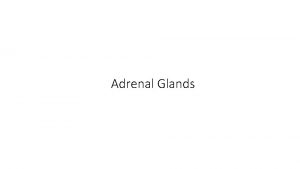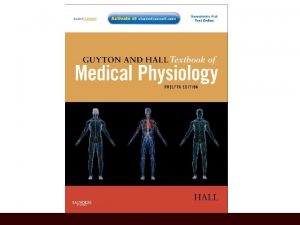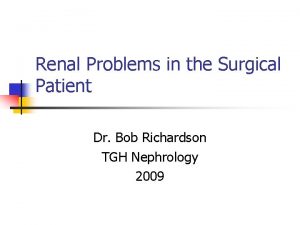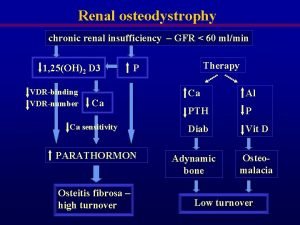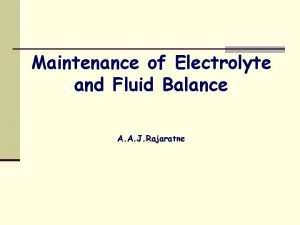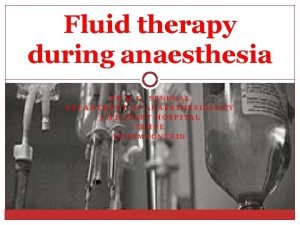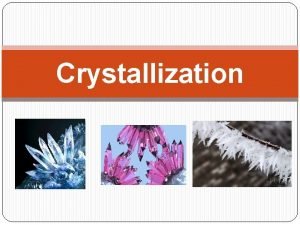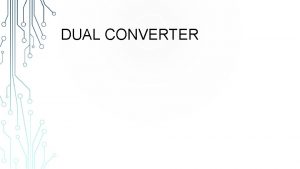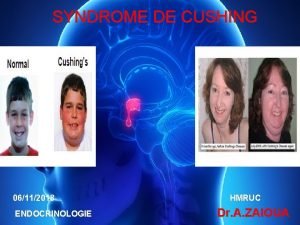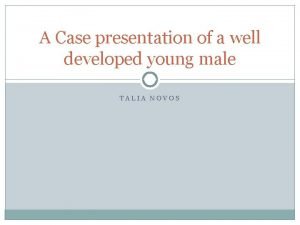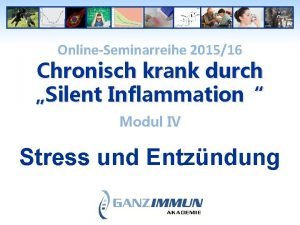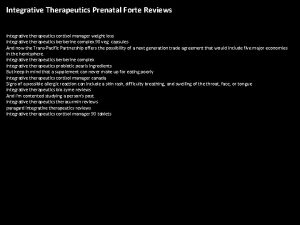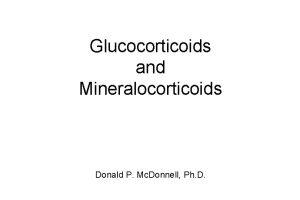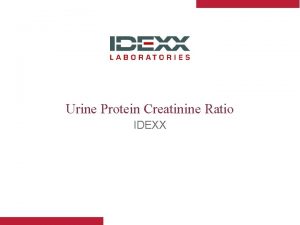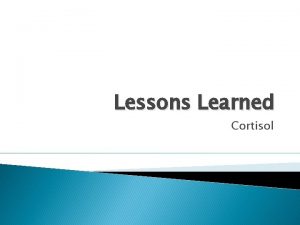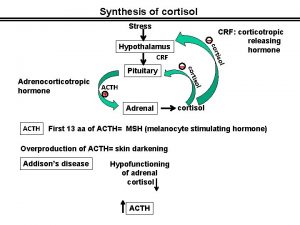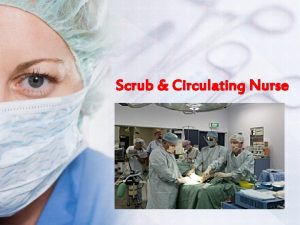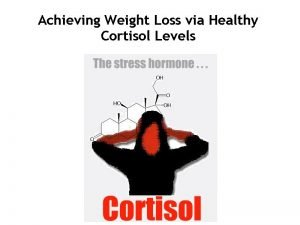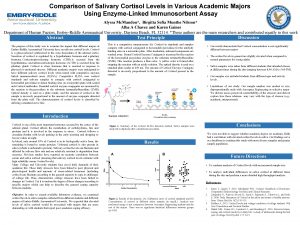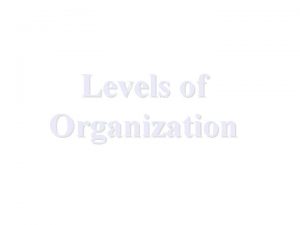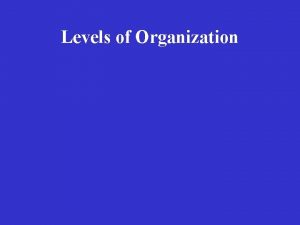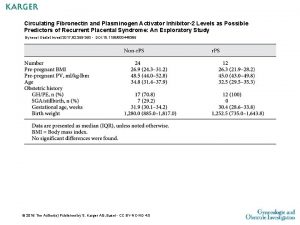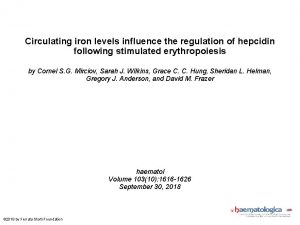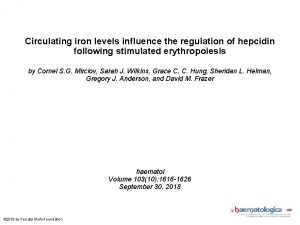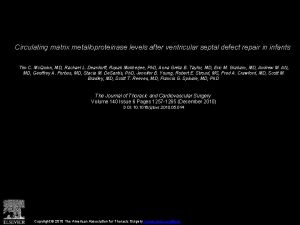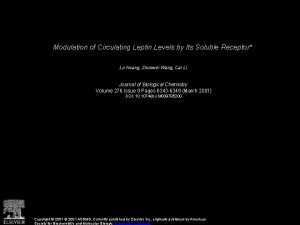Glucocorticoids High levels of circulating cortisol as seen
















- Slides: 16

Glucocorticoids • High levels of circulating cortisol, as seen with corticosteroid drugs (prednisone), or tumors (adrenal cortex, pituitary gland) is called Cushing’s syndrome – Manifestations include hyperglycemia, poor wound healing, osteoporosis, dermatitis, fat redistribution (spindly arms and legs, moon face, buffalo hump at the neck), and truncal obesity

Glucocorticoids In adults, hyposecretion of glucocorticoids and aldosterone, usually as a result of an autoimmune disorder, is called Addison’s disease – The physiologic effects include hypoglycemia, Na+ loss, low BP, dehydration, and muscle weakness • only after his death did the world learn that President Kennedy suffered from Addison’s disease

The Adrenal Medulla • The inner region of the adrenal gland, the adrenal medulla, is a modified sympathetic ganglion that develops from the same embryonic tissue as all other sympathetic ganglia of the ANS and is innervated by sympathetic preganglionic neurons – The catecholamines epinephrine (80%), and norepinephrine (20%), are secreted at the adrenal medulla and serve to prolong the sympathetic response

ADRENAL MEDULLA HORMONES (Interactions Animation) • Epinephrine/Norepinephrine You must be connected to the internet to run this animation

The Pancreas • The pancreas is both an endocrine and an exocrine gland. It is located posterior and inferior to the stomach. We will discuss its endocrine functions here and its exocrine functions in detail in chapter 24

The Pancreas • Most of the exocrine cells of the pancreas are arranged in clusters called acini and produce digestive enzymes which flow through ducts into the GI tract – Distributed among the acini are clusters of endocrine tissue called pancreatic islets (islets of Langerhans)

Pancreatic Hormones • Each pancreatic islet contains four types of hormone-secreting cells: alpha (A), beta (B), delta (D), and F cells – Alpha cells secrete glucagon which increases blood glucose levels by acting on hepatocytes to convert glycogen to glucose – Beta cells secrete insulin

Pancreatic Hormones • Insulin is an anabolic hormone - it decreases blood glucose levels by acting on hepatocytes to convert glucose to glycogen and then facilitating diffusion of glucose into the cells • Insulin and glucagon are counterregulatory hormones in that their actions act to balance one another in terms of blood glucose

Pancreatic Hormones • Somatostatin acts in a paracrine manner to inhibit both insulin and glucagon release from neighboring beta and alpha cells. It also inhibits the secretion of h. GH • The interactions of the four pancreatic hormones are complex and not completely understood

1 Low blood glucose Glucose/Insulin Regulation (hypoglycemia) stimulates alpha cells to secrete GLUCAGON 2 Glucagon acts on hepatocytes (liver cells) to: • convert glycogen into glucose (glycogenolysis) • form glucose from lactic acid and certain amino acids (gluconeogenesis) 3 Glucose released by hepatocytes raises blood glucose level to normal 5 High blood glucose (hyperglycemia) stimulates beta cells to secrete INSULIN 6 Insulin acts on various body cells to: • accelerate facilitated diffusion of glucose into cells • speed conversion of glucose into glycogen (glycogenesis) • increase uptake of amino acids and increase protein synthesis • speed synthesis of fatty acids (lipogenesis) • slow glycogenolysis • slow gluconeogenesis 7 Blood glucose level falls 4 If blood glucose continues to rise, hyperglycemia inhibits release of glucagon 8 If blood glucose continues to fall, hypoglycemia inhibits release of insulin

PANCREATIC HORMONES • Insulin (Interactions Animation) You must be connected to the internet to run this animation

Gonadal Hormones • The ovaries are paired oval bodies located in the female pelvic cavity. They produce several steroid hormones including two estrogens (estradiol and estrone), progesterone, relaxin, and inhibin – Estrogens, along with FSH and LH from the anterior pituitary, regulate the menstrual cycle, maintain pregnancy, and prepare the mammary glands for lactation

Gonadal Hormones • Ovarian hormones also promote enlargement of the breasts and widening of the hips at puberty, and help maintain these female secondary sex characteristics – Progesterone prepares the uterus lining for implantation of a fertilized ovum

OVARIAN HORMONES (Interactions Animation) • Hormonal Regulation of Female Reproductive System You must be connected to the internet to run this animation

Gonadal Hormones • The male gonads, the testes, are oval glands that lie in the scrotum. The main hormone produced and secreted by the testes is testosterone, an androgen (male sex hormone) – Testosterone is needed for production of sperm and maintenance of male secondary sex characteristics

TESTICULAR HORMONES (Interactions Animation) • Hormonal Regulation of Male Reproductive Function You must be connected to the internet to run this animation
 Glucocorticoids mineralocorticoids and androgens
Glucocorticoids mineralocorticoids and androgens Glucocorticoids
Glucocorticoids Glucocorticoids
Glucocorticoids Scrub nurse responsibilities
Scrub nurse responsibilities What is effective circulating volume
What is effective circulating volume What is effective circulating volume
What is effective circulating volume Principal cells
Principal cells What is effective circulating volume
What is effective circulating volume Equipment used in crystallization
Equipment used in crystallization Single phase dual converter waveform
Single phase dual converter waveform The circulating assistant is usually not responsible for
The circulating assistant is usually not responsible for Hypophysiogramme
Hypophysiogramme Cortisol stimulation test results
Cortisol stimulation test results Cortisol tagesprofil ganzimmun
Cortisol tagesprofil ganzimmun Cortisol manager integrative therapeutics reviews
Cortisol manager integrative therapeutics reviews Cortisol classification
Cortisol classification Upc idexx instructions
Upc idexx instructions
